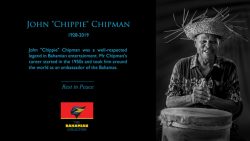There are two basic types of discs that you can buy for CD burners, CDR and CDRW. CDR is the cheapest and most widespread. These discs can be bought for under a buck, and can only be burned one time. CDRW — or CD-ReWriteable — is a relatively new standard that allows you to erase discs and reuse them, a la a cassette tape or minidisc. Most of the new recorders support both CDR and CDRW. CDRW is economical if you need to routinely save and delete large chunks of data. But in practice, if the data is important enough to back up, you probably want to keep it for a while. Also remember that older CD-ROM readers will not recognize CDRW discs. So, in general, CDR is the best bet.
A word of caution: There are some CDR discs designed exclusively for use in home stereo-style CD burners (which don’t require a computer), such as the Philips unit sold at retail chains like Best Buy and Circuit City. The discs are called “CDR Music” or “Music only”, and are generally more expensive because the recording industry gets a cut of each one sold. These discs may not work with some CD burners and burner software. So best to steer clear.
In any case, a blank CD will cost you anywhere between 50 cents and two bucks depending on the brand, and you can store 650 MB of data, 74 minutes of music, or a combination of the two. If you pack a CD with MP3 files, you can burn about 12 hours worth of music. Or you could burn about 30 minutes of good quality MPEG video. And if you need a little extra space, 80-minute CDs are also available.
The CDs you will create are different from the CDs you buy, but they will work with most any CD player. Retail CDs are pressed in a factory, which is a completely different process from CD burning. When you burn a CD, you are shooting a laser and writing the data. A CD has many layers, and the laser heats the bottom layer, which results in a pit. The pit has less reflectivity than a non-pit, or “land.” When a CD player reads the information, it shoots a light at the disc and analyzes the reflection.
CDRW discs look the same as CDR’s, but have different physical properties — three bottom layers, where a CDR has one. The middle layer is heated to change its structure, after which it can be written again. Pressed CDs offer the greatest reflection, followed by the CDR. The CDRW is the least reflective. The more reflective a CD, the easier it can be read by a wide range of decks, players, etc.
If you have had problems burning CDs in the past, you may have encountered the dreaded “buffer underrun” error message. Remember that burning a CD is a sustained process: The laser turns on, writes data, and turns off. During the writing portion, the computer must supply data to the laser at a consistent, steady pace. This data is held in a memory buffer and fed to the laser. If the computer gets interrupted and has no data for the laser, the process fails and a buffer underrun occurs. This means your blank CD is now useless — or, a trendy mirror for your cubicle. Your choice.
Adding system memory and a few other tricks should help eliminate this problem. Later, we will discuss these tips as well the memory buffer built into your CD Recorder.
One quick note on longevity. CDs have a life expectancy of 50 years or more. You can spill coffee on CDs and wipe it off. The main enemies of CDs are scratches, humidity and extreme heat, so keep them away from cats in hot greenhouses.
Another potential danger is the ball-point pen, which can damage the top layer of the disc. If you want to label a disk, be sure to use only a smudgeless, felt-tip pen, like a Sharpie.
By: Ben Peipelman, a Test Engineer at Adaptec. His work has included testing hardware and software including CDR programs. The best part of his job? “I get to try the latest products, and get paid to try and break them.”



